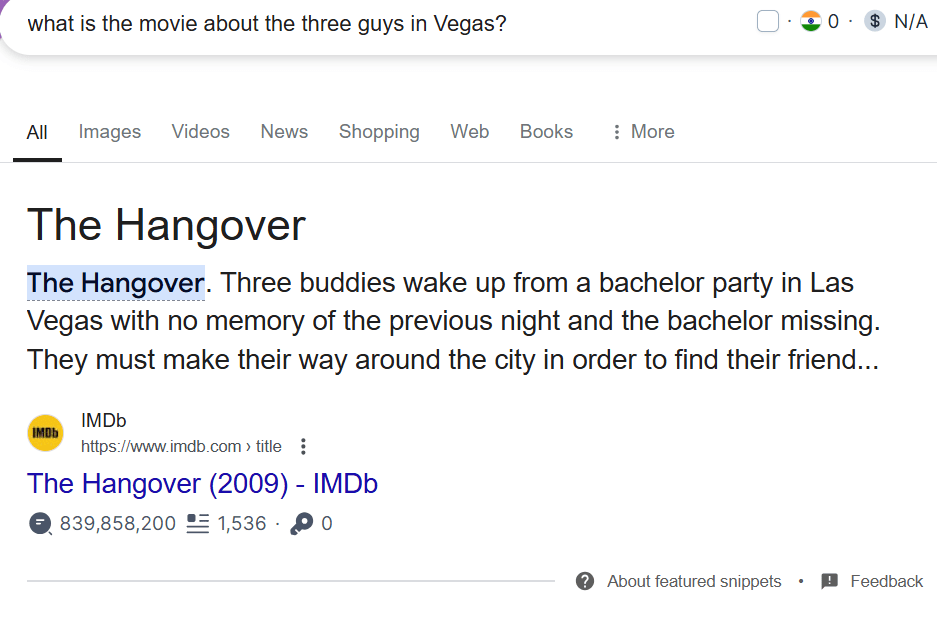Guides
Understanding Google’s Hummingbird Algorithm
In August 2013, Google introduced the Hummingbird algorithm, a significant update aimed at improving search predictability and relevance, replacing the older Caffeine algorithm.

Unlike the Penguin and Panda updates, which focused on penalizing low-quality content, Hummingbird changed how Google interpreted different types of queries. It shifted from merely matching keywords to understanding the context and meaning behind search queries. This allowed Google to deliver results that were more aligned with the user’s intent.
For example, before Hummingbird, a search for “sofa” would primarily return results containing the exact keyword “sofa.” With Hummingbird, Google became better at recognizing synonyms and related terms, such as:
This improvement meant that even if a search didn’t include the exact term, relevant results would still be displayed. Hummingbird focused on understanding the context and intent behind the search, a concept known as semantic search.
Hummingbird enhanced Google’s ability to interpret the user’s search intent more accurately. It’s often referred to as a ‘meaning’ technology, designed to make search interactions more human-like. By improving Google’s Knowledge Graph, Hummingbird helped users explore a network of connections related to their queries.
This algorithm excelled at understanding vague or colloquial queries. For example, if someone searched for “what is the movie about the three guys in Vegas?”, Google could infer the intent and provide accurate results, such as identifying the movie “The Hangover.” Instead of looking for exact keyword matches, Hummingbird deciphered the intent behind the query to deliver meaningful responses.
In essence, Hummingbird made Google smarter at determining relevant, high-quality pages that meet the searcher’s needs, even when the search terms were not explicitly clear.

The Hummingbird update also emphasized the importance of mobile search performance. With the rise of mobile usage came the increased popularity of voice searches, which tend to be more complex and conversational. Google designed Hummingbird to meet the expectation for natural interactions with search engines, particularly on mobile devices like smartphones and smartwatches.
Websites that adapted well to these changes saw a boost in their mobile traffic.
The introduction of Hummingbird brought significant changes to SEO practices. It encouraged SEOs to provide Google with more context about the topics covered on a webpage.
Page authority has always been a key ranking factor, but with Hummingbird, content relevance became even more crucial. The update improved the way Google directed users to the most relevant page of a website, enhancing user experience and conversion rates.
Link metrics continued to play a major role in the Hummingbird algorithm. It remained essential to focus on building links from contextually relevant sources, as links from irrelevant contexts offered less ranking benefit. This reaffirmed the importance of building relationships with topically related sites.
Hummingbird also strengthened the importance of phrase-based queries, catering to natural language and conversational searches. With the rise of voice search, optimizing content to address informational, navigational, and transactional queries became vital. Including phrases that ask ‘Who’, ‘What’, ‘Where’, and ‘How’ can improve SEO and help return richer results. The guidance remains consistent: load your site with original, relevant, high-quality content.
Additionally, Hummingbird increased the significance of structured data as a ranking factor. Using structured data schema markup became essential to clearly indicate the content of a page to Google, ensuring that your site provides the answers searchers are looking for.
For any SEO agency aiming to succeed in the Hummingbird era, paying close attention to anchor text is crucial. Anchor text, the clickable text in a hyperlink, must be relevant and descriptive to help search engines understand the context of the linked content. By strategically using anchor text, SEO agencies can improve a website’s visibility and ensure that it ranks well for relevant search queries. This practice not only supports link-building efforts but also enhances the overall user experience by providing clear and informative navigation, ultimately driving better search results and higher traffic to the site.
The Hummingbird update, a pivotal moment in search engine history, continues to cast a long shadow on SEO practices even a decade later. Its core principle – understanding user intent and semantic meaning – has become the bedrock of modern SEO strategy. Google’s algorithms have grown exponentially more adept, constantly refining their ability to decipher the complexities of human language and searcher behavior. This has led to a fascinating evolution in how we approach search engine optimization.
The Rise of Enriched Content: Hummingbird wasn’t just about keyword matching; it opened the door for Google to consider a wider range of elements that enrich the user experience. High-quality images, videos, and infographics are no longer just visual aids – they’re crucial components that complement written content and provide a more holistic understanding of the topic. For instance, a blog post on hiking the Grand Canyon might benefit greatly from a captivating video showcasing the breathtaking views, alongside detailed trail descriptions. This enriched content strategy caters to diverse learning styles and keeps users engaged for longer, sending positive signals to search engines.
Gone are the days when simply having relevant content guaranteed a top search ranking. Search engines like Google now go beyond relevance to gauge user engagement with a particular webpage. Factors like time spent on page, bounce rate (how quickly users leave a page), and click-through rates (the number of users who click on a search result) are now crucial metrics for SEO success. Creating content that resonates with the audience, keeps them immersed, and compels them to explore further is key. This might involve interactive elements, thought-provoking questions, or well-placed internal links that guide users deeper into a website’s content ecosystem. By prioritizing user engagement, websites can not only improve their search ranking but also cultivate a loyal following.
Hummingbird’s emphasis on understanding user intent is particularly relevant for local SEO. Search queries often contain implicit location indicators, such as “best pizza near me” or “dentist open on weekends.” Google leverages this information to deliver geographically relevant results. For local businesses, this means optimizing content with a laser focus on user location and intent. Including relevant city or neighborhood names, alongside service area maps and specific business hours, can significantly improve search visibility. Additionally, positive online reviews and local business listings further solidify a business’s presence within the local search landscape.
By embracing the lasting influence of Hummingbird and adapting to the ever-evolving search engine landscape, businesses and content creators can ensure their websites remain discoverable and continue to resonate with their target audience.
CNBC published an article in 2023 highlighting the growing importance of voice search optimization. As predicted by the trends initiated with Hummingbird, voice search continues to surge, and SEO strategies need to adapt to conversational queries and natural language.
Decoding Search Queries with BERT is a technical blog post from Google Research published in 2019. It details the development of BERT, a powerful AI language model that plays a significant role in Google Search today. BERT builds on the foundation laid by Hummingbird, further enhancing the ability to understand search queries with a nuanced grasp of language and context. While the blog post itself is technical, it provides a glimpse into the future of search engine sophistication.
How to Optimize Your Website for Featured Snippets discusses a concept that emerged after Hummingbird – featured snippets. These are concise summaries displayed at the top of search results pages, aiming to provide users with an immediate answer to their query. This 2021 New York Times article offers SEO tips to optimize content for featured snippets, a strategy that can significantly boost website traffic.
For the best in SEO, choose TomatoTree Digital, Kerala’s top-rated company. We tailor strategies to suit your brand’s needs. Start your journey today!

Never settle for anything less than the best! Hire the top SEO experts from the Best SEO Company in Kerala and benefit from the customized Search Engine Optimization strategies designed exclusively for your brand.

India

United Kingdom
Newsletter
Never settle for anything less than the best!
Other Links
WhatsApp us